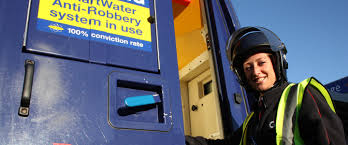Key Performance Areas: (not definitely inclusive):
Full duty and accountability for amassing and turning in clients’ money
Report all delays to the Branch Manager immediately
Incident prevention and reporting
Maintain radio contact with controllers
Take preventive motion towards any suspicious activity
Minimum Requirements:
Clear crook record
Valid Drivers License and PDP
Tactical fight training
Clear deposit record
PSIRA authorised at least with Grade C
Completed firearm education in handgun and rifle
SAPS competency certificate
CIT Certificate
Experience in the protection enterprise or a comparable role
3 years journey in CIT using and crew functions
Other Personality Attributes:
Must be trustworthy and reliable
Must have excellent verbal and language abilities
Must be assertive
Must be self-motivated
Pay interest to detail
Willing to work overtime
Customer service and relations
Quality assurance
Willing to Travel
Core Competencies:
Self-development
Communication skills
Customer focus
Teamwork
Cash-in-Transit Driver: Duties, Responsibilities, and Security Protocols
Imagine this: A cash-in-transit (CIT) driver is ambushed. Gunfire erupts. Their quick thinking and training is the only thing that stops a robbery. CIT drivers face real danger to keep our money safe.
What exactly does a CIT driver do? These professionals transport money and valuables between locations. It’s a job filled with risk, demanding responsibility. This article will explore the core duties and security protocols these drivers follow.
The Core Duties of a Cash-in-Transit Driver
A cash-in-transit driver’s job is more than just driving. Let’s explore their main tasks.
Transportation of Valuables
CIT drivers move a variety of important stuff. This includes cash, jewelry, and sensitive documents. They travel to banks, ATMs, and businesses.
Secure loading and unloading is key. Drivers carefully check items against manifests. Accurate records are a must, noting every detail.
Route Planning and Navigation
A CIT driver plans routes carefully. They look for the safest, most efficient path. Getting from A to B isn’t simple.
Before each trip, drivers evaluate risk. They use navigation tools to stay on track. Communication systems keep them in constant contact.
Vehicle Maintenance and Inspection
The armored truck is a CIT driver’s lifeline. Keeping it ready is a top priority.
Each day, drivers inspect their vehicle. They report any issues, big or small. They also handle basic upkeep and work with mechanics.
Security Protocols and Risk Management
Security is at the heart of a CIT driver’s role. They follow strict rules to protect assets.
Adherence to Security Regulations
CIT drivers must know and follow security rules. They comply with company policies.
They also follow legal requirements for transporting valuables. Staying within the law is non-negotiable.
Emergency Response Procedures
What happens during an attack? CIT drivers train for emergencies.
They learn how to handle attempted robberies. Communication is key during crises. They know who to call and what to say.
Use of Security Equipment
Armored vehicles are essential tools. CIT drivers learn to operate them properly.
They also use security systems. If applicable and legal, they are trained in the proper use of firearms.
Interacting with Clients and Maintaining Professionalism
CIT drivers aren’t just guards. They also represent their company.
Customer Service Standards
Professionalism is important when interacting with clients. Courteous behavior is essential.
CIT drivers address client questions and concerns. They always try to be helpful.
Documentation and Reporting
Paperwork is part of the job. CIT drivers complete forms for each transaction.
They also report any problems. This includes discrepancies or security breaches.
Training and Qualifications for CIT Drivers
What does it take to become a CIT driver? It requires specific skills and training.
Essential Skills and Certifications
A valid driver’s license is required. A clean driving record is essential.
Background checks are mandatory. Security clearances are also a must.
Ongoing Training and Development
Learning never stops for CIT drivers. They take refresher courses on security.
They also learn about new tech and procedures. Keeping up-to-date is important.
The Future of Cash-in-Transit Driving
The CIT industry is changing. New tech is shaping the future.
Technological Advancements in Security
Tech is making CIT safer. GPS tracking is now common.
Real-time monitoring systems are also being used. AI can even help with risk assessment.
Adapting to Changing Payment Landscapes
Digital payments are on the rise. CIT services are adapting.
They now handle digital transactions. They also secure data transport.
Conclusion
CIT drivers have many duties. Security, professionalism, and training are key. They play a vital role in the financial system. These professionals keep money safe, day in and day out.



